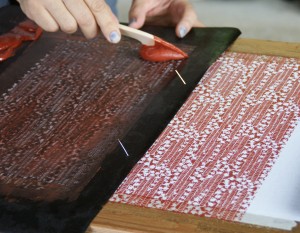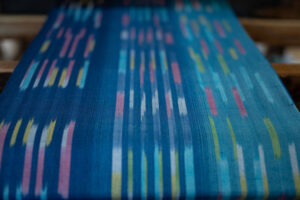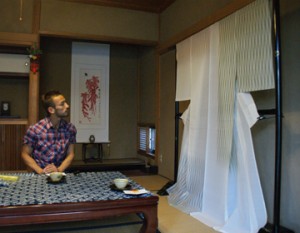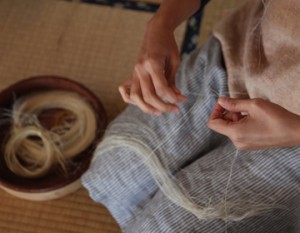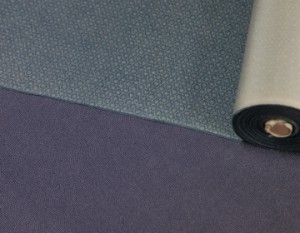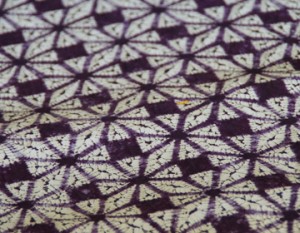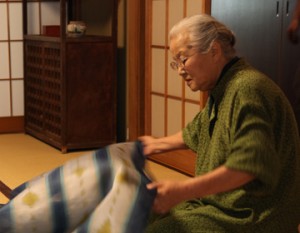Bingata-zome, originated and passed on in Okinawa
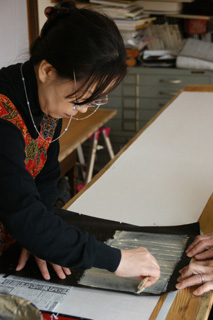
Are you familiar with a textile dyeing method called ”Bingata-zome?” Using colors that remind you of the Okinawa environment such as yellow, light blue, and red, this traditional stencil dyeing method originating in Okinawa was used to dye garments for royalty and aristocrats of the ”Ryukyu Dynasty.”
”Bingata-zome” was made by the ”samurai” class that served the ”Ryukyu Dynasty” for generations, but following the invasion of ”Ryukyu” by ”Satsuma-han” and Meiji government’s abolition of the ”han” system, Okinawa went through drastic changes. ”Bingata-zome” slowly declined. In addition, the stencils for dyeing which are integral in passing on ”Bingata” patterns were burned during the war.
”Bingata” was rescued by the late Yoshitaro Kamakura who was also instrumental in rebuilding Okinawa Shurijo Castle, later recognized as Important Intangible Cultural Property. Kamakura was an art historian who collected stencils for ”Bingata-zome” and had stored them at an art school in Tokyo. As a result, the stencils had escaped being damaged by war.
Passing on the very rare “Oborogata-zome”
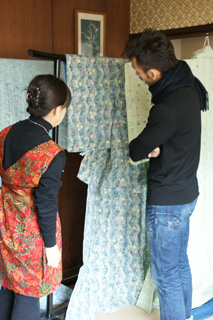
We interviewed Akiyo Shinohara who studied under Kamakura.
After the war, the stencil patterns were brought back to Okinawa by Kamakura where a very important technique of ”Bingata-zome” called ”Oborogata-zome” was revived. Akiyo became involved in ”Bingata-zome” under Kamakura, and there she succeeded the technique that is passed on to this day.
”Oborogata-zome” is a method where the fabric is dyed several times on top of each other using two or three stencils. It is a laborious, time consuming method as you need to repeat the same process several times, but the resulting patterns and the coloring become complex.
”Oborogata is called ”Uburu” in Okinawa” says Akiyo. She does not produce as much ”Oborogata-zome” these days, but you can sense her passion towards ”Oborogata-zome” in her words.
Softness in “Oborogata-zome”
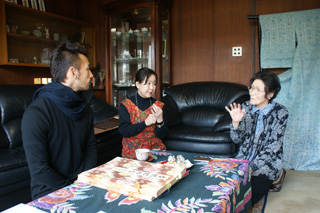
Akiyo-san works with her daughter-in-law, Yuko-san at their home studio. Because of her interest in art history and tea ceremony, Yuko-san often wore kimono which sparked her interest in textile dyeing. After marrying into to the family, she learned ”Bingata-zome” from Akiyo-san and started to work with her.
Nowadays, Yuko-san herself produces ”Oborogata-zome” cloth in Akiyo-san’s place. Using ”Oborogata-zome” method, she dyes numerous colors in patterns, but the ”kimono” carries a soft, refreshing atmosphere. ”Oborogata-zome” is a very old technique from Okinawa which was preserved by Kamakura, and Akiyo-san who studied under Kamakura. Now the technique is passed on from Akiyo-san to Yuko-san.




